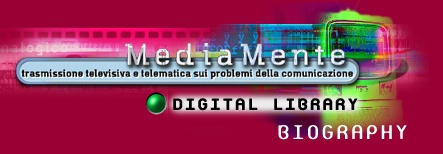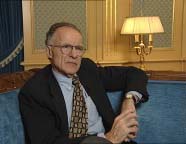 |
 |
Interview
BiographyArno Penzias arrived with his family in the United States in January 1940, fleeing from Nazi anti-Semitism. In 1947 he enrolled in Brooklyn Technical High School. After graduation in 1951, he began studying at City College in New York and during his first year at the college discovered physics and decided to pursue the subject. He graduated in 1954 and joined the US Army Signal Corps as a radar officer at Fort Devens in Massachusetts. After the Army he became a researcher in the Radiation Laboratory of Columbia University. In 1958 he was awarded an M. A. and four years later a Ph.D. in physics. He joined Bell Labs as a member of the technical staff in 1961; two years later he met Robert W. Wilson. The two researchers shared Bell Lab's single post of radio-astronomer, but meanwhile dedicated themselves to research in other sectors. Penzias and Wilson intended to use an antenna to measure the radio signals from Cassiopea A, an extinct supernova, and the halo of the Milky Way. The experiments required that the antenna not introduce any background noise, but Penzias and Wilson could not eliminate an "inexplicable" noise. The experiment seemed to have entered a blind alley. Later the mysterious noise was explained: it was the echo of the explosion which took place 15 billion years ago, the birth of the universe. That "noise" was thus the proof of the "Big Bang" theory. Penzias and Wilson were awarded the 1978 Nobel Prize for Physics for this discovery. Meanwhile, in 1969, Penzias was promoted to supervisor of technical personnel, in 1972 he was appointed head of the Radio Physics Research Department and in 1976 became the Director of the Radio Research Laboratory. In 1978 he was nominated executive director of the Communications Sciences Research Division and in 1981, vice-president of research, a post he held for fourteen years. From 1995 to 1996 he was also director of research. Penzias has written over 100 scientific articles, two books, two science fiction collections and numerous articles on technology and economics. His first book Ideas and Information Managing in a High-tech World, published in 1989 in the USA by W.W. Norton & Co., was published in Italy by Bombiani under the title, Come vivere in un mondo High-Tech. Per un uso umano del computer (translated by Gianpaolo Proni). His second book, Digital Harmony (Harper Collins, 1996) has not yet been published in Italy. A member of the most renowned America and international academies, Penzias has received numerous awards and prizes. In 1976 he was the first American to be awarded an honorary degree from the Observatoire de Paris and since then has received over twenty honorary degrees from universities all over the world. For many years Penzias has been vice-chairman of the Committee of Concerned Scientists, an organisation devoted to working for the political freedom of scientists in various countries. He has been working to defend the rights of minorities and against injustice and social inequality for many years. He devoted part of his Nobel Prize money to institutions for the protection of young people and Jewish immigrants He officially retired from his position as vice-president and director of research in April 1998, but continues to work as a consultant, with the title Senior Technology Advisor. He is involved in the management of venture capital in Silicon Valley for Lucent Technologies and New Enterprise Associates. |
|
|||
| Apart from his numerous honorary titles and awards, he is also responsible for many patented inventions including: a Data base for the real-time selection of the best carriers for the tariff, a system for identifying the participants in a telephone conference, a system for playing cards at a distance with normal cards, a computerised public transport system, a system for preventing telephone-card fraud, the identification of telephone extensions in residential environments, a double-encoded identity verification system. |  |
